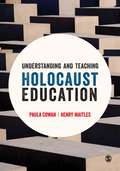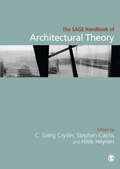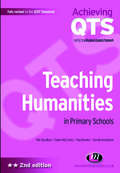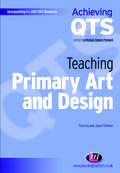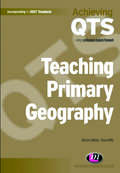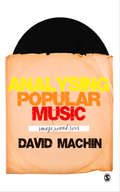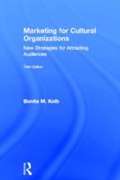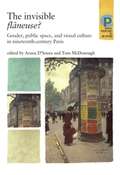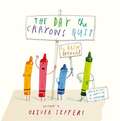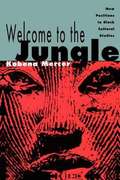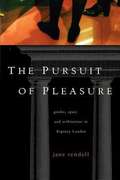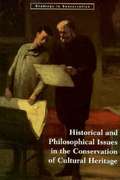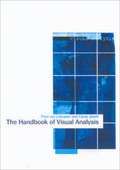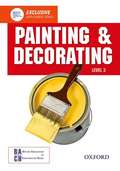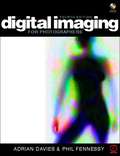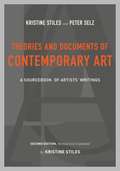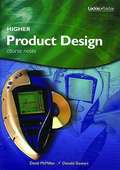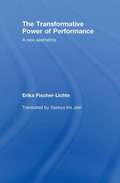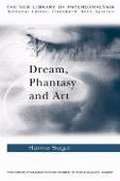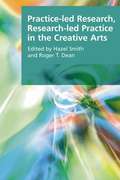- Table View
- List View
A flying angel and other studies (tactile)
by RnibAbout 1534-1536. Black chalk. Size: 40.7 x 27.2 cm. British Museum, PD 1860-6-16-5. The main study and the arm at the upper right relate to figures in the ""Last Judgement"". Both are for a flying angel in the upper right corner. Michelangelo must already have worked out the overall group: he did not include the tips of the right-hand fingers, because he knew they would be hidden by another figure in the finished work. This drawing is a collection of incomplete sketches of various nude poses and body detail. The most complete sketch consists of a nude figure that looks like it is flying in mid air. The arms are slightly bent at the elbows and are shown reaching out in front of the figure, with the fingers splayed. The left leg is bent back at the knee. The right leg is not shown along with the tips of the fingers on the right hand. The tactile image only shows the most complete figure. The outline of the figure is defined by thick lines with muscle tone shown as rough texture. Braille labels have been added: head, back, right arm, left hand, buttocks, right leg, and left leg.
A seated male nude twisting around (tactile)
by RnibAbout 1504-1505. Pen and brown ink, brown and grey wash, heightened with lead white (partly discoloured) over leadpoint and stylus. Size: 42.1 x 28.7 cm. British Museum, PD 1887-5-2-116. This is one of several drawings exhibited here for Michelangelo's ""Bathers"" cartoon, the centrepiece of the never executed fresco of the Battle of Cascina for the Palazzo Vecchio, Florence. This is a life study for the pivotal figure seated at the centre of the composition. The way Michelangelo has used pen and white heightening to describe the model's glistening limbs is highly effective. However, his use of wash for the shaded area is less successful. This drawing shows a seated male nude with his legs and knees facing the viewer but with torso and head turned away from the viewer. His right arm is bent at the elbow and is raised to head height. His left arm is not shown as this is out of sight behind his torso. The figure's right leg is bent at the knee and is resting on the seat. The detail on the drawing is concentrated on the legs and twisting torso. The head and right hand are less defined, with the seat barely shown. The tactile image shows an outline of the figure defined by thick lines with muscle tone shown as rough texture. Thin lines give an idea where the seat is. Braille labels have been added: head, shoulder, right arm, buttocks, right leg, left leg and seat.
Kali (SEB Contracted)
by RnibEarly 20th century. Santal region of eastern Bihar/western Bengal. Scroll - paint on recycled paper. Size: 107 cm long and 20 cm wide. Museum number: 1988. 7-3. 06. Although crudely executed this picture shows Kalis true nature: fascinating but frightening and attended by terrifying goblins. The scroll comes from the tribal Santal zone in western Bengal. Here scrolls are used both for storytelling and for death rituals. This one is part of a group of seven that was acquired by a British school-teacher stationed in this then remote area. The dominate colours on this painting are black and red, along with tones of blue and brown. The image of Kali fills the top two thirds of this long, narrow picture. She is shown facing the viewer with her feet turned slightly to her right. Kali is standing on the left arm of a male figure, her husband Shiva, who is lying on his back. Two black goblins are shown below Shiva. Kali is depicted naked with a black body. Two areas of her body appear transparent, a strip around her hips and the upper half of her body extending a short way down her arms, as the background of the painting can be seen through these areas. The black areas of the body also have small red patches on the knees, elbows and feet. Her head is black with white eyes and black pupils, white teeth, a red moustache and long red protruding tongue. She has large ears with three holes in each with hoop earrings through the lower holes. Her hair is beaded and pulled upwards into spikes which looks like a crown. Kali has four arms, two are down by her side and two are held above her head. Each arm has a wide bangle at the wrist and bands on the upper arm. In her lower left hand, she is holding a severed head. Around her neck and descending down to her knees is a large garland that is made up of more severed heads. There are thick anklets around each ankle. The tactile image focuses solely on Kali. The black area of her body and head are shown with solid texture along with her crown-like hair and the hand-held severed head. The eyes, holes in the ears, teeth, protruding tongue, bangles, arm bands and anklets are shown as hollows in the solid texture. The garland of severed heads is shown as a rough texture with hollows for individual heads. Braille labels: upper right arm, upper left arm, letter p (for protruding tongue), lower right arm, lower left arm, garland of severed heads, severed head, arm band, wrist band and anklet on left leg."
Understanding and Teaching Holocaust Education (1st edition) (PDF)
by Paula Cowan Professor Henry MaitlesThe Holocaust is a controversial and difficult teaching topic that needs to be approached sensitively and with an awareness of the complex and emotive issues involved. This book offers pragmatic pedagogical and classroom-based guidance for teachers and trainee teachers on how to intelligently teach holocaust education in a meaningful and age-appropriate way. Key coverage includes: Practical approaches and useful resources for teaching in schools; Holocaust education and citizenship; Holocaust remembrance as an educational opportunity; How to explore the topic of anti-semitism in the classroom; Exploring international perspectives on holocaust education. Related ISBN: 9781473988026 (EPUB), 9781473987265 (PDF).
The SAGE Handbook of Architectural Theory
by Stephen Cairns Hilde Heynen Greig Crysler"Offers an intense scholarly experience in its comprehensiveness, its variety of voices and its formal organization... the editors took a risk, experimented and have delivered a much-needed resource that upends the status-quo." - Architectural Histories, journal of the European Architectural History Network "Architectural theory interweaves interdisciplinary understandings with different practices, intentions and ways of knowing. This handbook provides a lucid and comprehensive introduction to this challenging and shifting terrain, and will be of great interest to students, academics and practitioners alike." - Professor Iain Borden, UCL Bartlett School of Architecture "In this collection, architectural theory expands outward to interact with adjacent discourses such as sustainability, conservation, spatial practices, virtual technologies, and more. We have in The Handbook of Architectural Theory an example of the extreme generosity of architectural theory. It is a volume that designers and scholars of many stripes will welcome." - K. Michael Hays, Eliot Noyes Professor of Architectural Theory, Harvard University The SAGE Handbook of Architectural Theory documents and builds upon the most innovative developments in architectural theory over the last two decades. Bringing into dialogue a range of geographically, institutionally and historically competing positions, it examines and explores parallel debates in related fields. The book is divided into eight sections: Power/Difference/Embodiment Aesthetics/Pleasure/Excess Nation/World/Spectacle History/Memory/Tradition Design/Production/Practice Science/Technology/Virtuality Nature/Ecology/Sustainability City/Metropolis/Territory. Creating openings for future lines of inquiry and establishing the basis for new directions for education, research and practice, the book is organized around specific case studies to provide a critical, interpretive and speculative enquiry into the relevant debates in architectural theory.
Teaching Humanities in Primary Schools
by Susan Bermingham Paul Bowen Pat Hoodless Elaine MccreeryThis book supports primary trainees in their learning and teaching approach to the core humanities subjects: geography, history and religion. It promotes an integrated approach to these subject areas and encourages trainees to reflect on the links between subjects, across the curriculum from the Early Years Foundation Stage through to Key Stage 2. This edition has been updated to incorporate the revised Professional Standards for the Award of QTS and addresses key initiatives such as Excellence and Enjoyment, Every Child Matters and the Primary National Strategy for Literacy and Mathematics.
Teaching Primary Art and Design
by Paul Key Jayne StillmanThis book introduces trainees and newly qualified primary teachers to the teaching of art and design in primary schools. It helps students gain an appreciation of what constitutes good practice in primary art and design and how they can go about achieving it. To meet the different needs of students, the book identifies varying levels of experience, creativity and confidence, and offers suggestions for applying these levels to the classroom. The book covers key areas of the art and design curriculum for Early Years Foundation Stage, Key Stage 1 and Key Stage 2, considering both their discrete and developmental characteristics.
Teaching Primary Geography
by Professor Simon J Catling Tessa WillyWritten with reference to the 2007 Professional Standards for the Award of QTS and initiatives such as the Primary National Strategy, each chapter offers practical guidance on topics such as planning, assessment and the creation of resources. It provides summaries of key topics in primary geography, including the study of places, environmental sustainability, learning beyond the classroom, global issues, citizenship and cross-curricular approaches to promote children's subject knowledge, well-being and learning within primary geography. With research summaries, practical and reflective tasks, and classroom examples, this book helps trainees and NQTs teach primary geography confidently and creatively throughout the primary school.
Understanding and Teaching Holocaust Education (1st edition)
by Paula Cowan Professor Henry MaitlesThe Holocaust is a controversial and difficult teaching topic that needs to be approached sensitively and with an awareness of the complex and emotive issues involved. This book offers pragmatic pedagogical and classroom-based guidance for teachers and trainee teachers on how to intelligently teach holocaust education in a meaningful and age-appropriate way. Key coverage includes: Practical approaches and useful resources for teaching in schools; Holocaust education and citizenship; Holocaust remembrance as an educational opportunity; How to explore the topic of anti-semitism in the classroom; Exploring international perspectives on holocaust education. Related ISBN: 9781473988026 (EPUB).
Analysing Popular Music: Image, Sound and Text
by David MachinElectronic Inspection Copy available for instructors here Popular music is far more than just songs we listen to; its meanings are also in album covers, lyrics, subcultures, voices and video soundscapes. Like language these elements can be used to communicate complex cultural ideas, values, concepts and identities. Analysing Popular Music is a lively look at the semiotic resources found in the sounds, visuals and words that comprise the 'code book' of popular music. It explains exactly how popular music comes to mean so much. Packed with examples, exercises and a glossary, this book provides the reader with the knowledge and skills they need to carry out their own analyses of songs, soundtracks, lyrics and album covers. Written for students with no prior musical knowledge, Analysing Popular Music is the perfect toolkit for students in sociology, media and communication studies to analyse, understand - and celebrate - popular music.
Marketing for Cultural Organizations: New Strategies for Attracting Audiences (3rd edition)
by Bonita M. KolbThis title presents traditional marketing theory with a focus on the aspects most relevant to arts or cultural organizations. The book explains how to overcome the division between the concepts of high art and popular culture by targeting the new tech savvy cultural consumer. 9780415626972 9780203102367
The Invisible Flaneuse?: Gender, Public Space and Visual Culture in Nineteenth Century Paris (PDF)
by Aruna D'Souza Tom McdonoughThis collection of essays revisits gender and urban modernity in nineteenth-century Paris in the wake of changes to the fabric of the city and social life. In rethinking the figure of the flaneur, the contributors apply the most current thinking in literature and urban studies to anexamination of visual culture of the period, including painting, caricature, illustrated magazines, and posters. Using a variety of approaches, the collection re-examines the long-held belief that life in Paris was divided according to strict gender norms, with men free to roam in public space whilewomen were restricted to the privacy of the domestic sphere. Framed by essays by Janet Wolff and Linda Nochlin - two scholars whose work has been central to the investigation of gender and representation in the nineteenth century - this collection brings together new methods of looking at visual culture with a more nuanced way of picturing city life.
The Day The Crayons Quit (PDF)
by Drew Daywalt Oliver JeffersDrew Daywalt and Oliver Jeffers team up to create a colourful solution to a crayon-based crisis in this playful, imaginative story that will have children laughing and playing with their crayons in a whole new way. 9780399255373
Welcome To The Jungle: New Positions In Black Cultural Studies
by Kobena MercerWelcome to the Jungle brings a black British perspective to the critical reading of a wide range of cultural texts, events and experiences arising from volatile transformations in the politics of ethnicity, sexuality and "race" during the 1980s. The ten essays collected here examine new forms of cultural expression in black film, photography and visual art exerging with a new generation of black British artists, and interprets this prolific creativity within a sociological framework that reveals fresh perspectives on the bewildering complexity of identity and diversity in an era of postmodernity. Kobena Mercer documents a wealth of insights opened up by the overlapping of Asian, African and Caribbean cultures that constitute Black Britain as a unique domain of diaspora.
Welcome To The Jungle: New Positions In Black Cultural Studies (PDF)
by Kobena MercerWelcome to the Jungle brings a black British perspective to the critical reading of a wide range of cultural texts, events and experiences arising from volatile transformations in the politics of ethnicity, sexuality and "race" during the 1980s. The ten essays collected here examine new forms of cultural expression in black film, photography and visual art exerging with a new generation of black British artists, and interprets this prolific creativity within a sociological framework that reveals fresh perspectives on the bewildering complexity of identity and diversity in an era of postmodernity. Kobena Mercer documents a wealth of insights opened up by the overlapping of Asian, African and Caribbean cultures that constitute Black Britain as a unique domain of diaspora.
The Pursuit Of Pleasure (PDF)
by Jane RendellThe Pursuit of Pleasure presents the figures of the rambler and the cyprian, the Eighteenth Century precursors to the Parisian flGneur and prostitute. The urban spaces traced by these figures were the clubs, sporting venues, operas, assembly rooms, street.
Historical And Philosophical Issues In The Conservation Of Cultural Heritage
by Nicholas S. Price M. Kirby Talley Alessandra Melucco VaccaroThis is the first comprehensive collection of texts on the conservation of art and architecture to be published in the English language. Designed for students of art history as well as conservation, the book consists of forty-five texts, some never before translated into English and many originally published only in obscure or foreign journals. The thirty major art historians and scholars represented raise questions such as when to restore, what to preserve, and how to maintain aesthetic character. Readings come from the work of such writers as Ruskin, Berenson, Clive Bell, Cesare Brandi, Kenneth Clark, Erwin Panofsky, E. H. Gombrich, Marie Cl. Berducou, and Paul Philippot. The fully illustrated book also contains references, a glossary of terms, and an index.
The Handbook Of Visual Analysis (PDF)
by Theo Van Leeuwen Carey JewittThe Handbook of Visual Analysis is a rich methodological resource for students, academics, researchers and professionals interested in investigating the visual representation of socially significant issues. The Handbook: #65533; Offers a wide-range of methods for visual analysis: content analysis, historical analysis, structuralist analysis, iconography, psychoanalysis, social semiotic analysis, film analysis and ethnomethodology #65533; Shows how each method can be applied for the purposes of specific research projects. #65533; Exemplifies each approach through detailed analyses of a variety of data, including, newspaper images, family photos, drawings, art works and cartoons. #65533; Includes examples from the authors' own research and professional practice. The Handbook of Visual Analysis which demonstrates the importance of visual data within the social sciences offers an essential guide to those working in a range of disciplines including: media and communication studies, sociology, anthropology, education, psychoanalysis, and health studies.
Painting and Decorating Level 3 Diploma Student Book 1 (PDF)
by British Association of Construction HeadsThis text has been developed in partnership with the British Association of Construction Heads (BACH) to bring you up-to-date and expert knowledge of painting and decorating. Written for the Cskills Awards level 3 diploma in painting and decorating, it is also suitable for the equivalent C & G specification.
Digital Imaging For Photographers
by Adrian Davies Phil FennessyThis authoritative, best-selling guide provides both professional and amateur photographers worldwide with a comprehensive introduction to the technologies and techniques of digital imaging. Features: * An in-depth overview of image capture with digital cameras and scanners* Hardware and software considerations* The digital darkroom - image processing with examples from Adobe Photoshop, showing how to achieve the highest quality images* Printing digital images* Colour management issues This completely revised and updated fourth edition, with the latest information on cameras, printers and image processing techniques, is also illustrated throughout with full colour images for the first time. The free CD-ROM contains many of these images so that you can practice the techniques in the book, as well as new examples of some the other issues discussed. Specially produced animations show the operation of charge coupled devices (CCDs) and software provided includes NIH Image (Scion Image for PC), invaluable for technical photographers to process and analyse their images. If you are considering investing in digital imaging equipment, or want to understand more about this subject, this book will offer you authoritative, first-hand advice. Adrian Davies is Deputy Head of the Department of Arts, Media and General Education at North East Surrey College of Technology, where he has introduced various courses on digital imaging. He writes regularly for a number of magazines and speaks at various conferences and exhibitions, as well as being an active wildlife and natural history photographer. Phil Fennessy is Digital Capture Development Manager for Eastman Kodak.
Theories and Documents of Contemporary Art (PDF)
by Kristine Stiles Peter SelzStiles has added forty images and a diverse roster of artists, including many who have emerged since the 1980s, such as Julie Mehretu, Carrie Mae Weems, Damien Hirst, Shirin Neshat, Cai Guo-Qian, Olafur Eliasson, Matthew Barney, and Takashi Murakami. The writings, which as before take the form of artists' statements, interviews, and essays, make vivid each artist's aesthetic approach and capture the flavor and intent of his or her work. The internationalism evident in this revised edition reflects the growing interest in the vitality of contemporary art throughout the world from the U.S. and Europe to the Middle East, Asia, Africa, Latin America, and Australia.
Higher Product Design Course Notes (PDF)
by David McmillanThis second edition of Higher Craft & Design Course Notes includes all the recent changes from the National Qualifications review for fully relevant course coverage.
The Transformative Power of Performance: A New Aesthetics
by Erika Fischer-Lichte Saskya JainIn this book, Erika Fischer-Lichte traces the emergence of performance as 'an art event' in its own right. In setting performance art on an equal footing with the traditional art object, she heralds a new aesthetics. The peculiar mode of experience that a performance provokes - blurring distinctions between artist and audience, body and mind, art and life - is here framed as the breeding ground for a new way of understanding performing arts, and through them even wider social and cultural processes. With an introduction by Marvin Carlson, this translation of the original Ästhetik des Performativen addresses key issues in performance art, experimental theatre and cultural performances to lay the ground for a new appreciation of the artistic event.
Dream, Phantasy and Art (The New Library of Psychoanalysis)
by Hanna Segal Betty JosephHanna Segal's work, especially on symbolism, aesthetics, dreams, and the exploration of psychotic thinking, has established her as an outstanding figure in psychoanalysis, particularly in psychoanalysis of the Kleinian tradition. In Dream, Phantasy and Artshe reworks her ideas on these topics and brings them vividly alive in a new integration which links them afresh to the work of Freud, Klein, and Bion. Throughout the book, the clinical illustrations the author has selected brilliantly spotlight the theory, touching the imagination, and fixing even the most difficult ideas permanently in the reader's mind. In a mutually enhancing relationship, theory and clinical example are combined, and then applied, to create the author's new and original theories of art and aesthetics. As Betty Joseph notes in her foreword, Segal's writing, and in particular this book, does much to enrich psychoanalysis not only because of the clarity and intelligence but also because of the depth and breadth of her interests and her clinical imagination.
Practice-led Research, Research-led Practice in the Creative Arts (PDF)
by Roger T. Dean Hazel SmithThis book addresses one of the most exciting and innovative developments within higher education: the rise in prominence of the creative arts and the accelerating recognition that creative practice is a form of research. The book considers how creative practice can lead to research insights through what is often known as practice-led research. But unlike other books on practice-led research, it balances this with discussion of how research can impact positively on creative practice through research-led practice. The editors posit an iterative and web-like relationship between practice and research. Essays within the book cover a wide range of disciplines including creative writing, dance, music, theatre, film and new media, and the contributors are from the UK, US, Canada and Australia. The subject is approached from numerous angles: the authors discuss methodologies of practice-led research and research-led practice, their own creative work as a form of research, research training for creative practitioners, and the politics and histories of practice-led research and research-led practice within the university. The book will be invaluable for creative practitioners, researchers, students in the creative arts and university leaders. Key Features*The first book to document, conceptualise and analyse practice-led research in the creative arts and to balance it with research-led practice*Written by highly qualified academics and practitioners across the creative arts and sciences *Brings together empirical, cultural and creative approaches*Presents illuminating case histories of creative work and practice-led research

